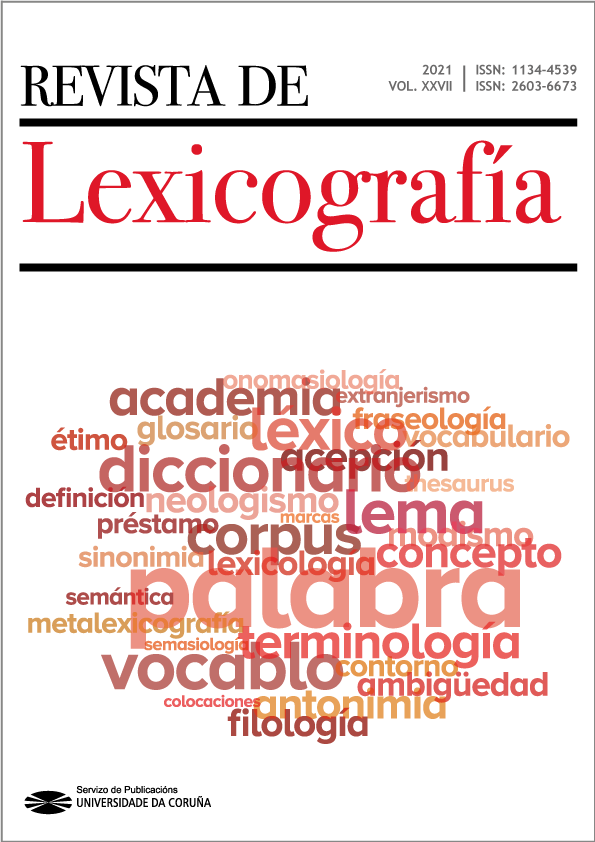Del argot de la droga a la lengua coloquial
DOI:
https://doi.org/10.17979/rlex.2021.27.1.8664Palabras clave:
lexicografía, sociolingüística, argot, lengua coloquial, españolResumen
El objeto de este artículo es doble. Por un lado, examinar los principales cambios de significado que han tenido lugar con algunas voces típicas de la terminología de la droga en español. Por otro, hacer un breve repaso de su nacimiento y evolución en las últimas décadas del siglo pasado a partir de cuatro contextos socioculturales claramente diferenciados: la cultura del LSD en Estados Unidos en los años sesenta, el consumo del hachís y marihuana en los años setenta, de la heroína en los ochenta, y de la cocaína y las drogas de síntesis en los noventa.
Descargas
Referencias
Corominas, Joan y José Antonio Pascual (1980-1991): Diccionario crítico etimológico castellano e hispánico, Madrid, Gredos.
Duva, Jesús (2021): «La lengua de los camellos», Archiletras, 12, accesible en https://www.archiletras.com/lexico-profesional/la-lengua-de-los-camellos/.
Ordovás, Jesús (1977): De qué va el Rrollo, Madrid, Ediciones de la Piqueta.
Rodríguez González, Félix (2002): «Lenguaje y contracultura juvenil: anatomía de una generación», en F. Rodríguez, coord., El lenguaje de los jóvenes, Barcelona, Ariel, pp. 29-56.
Rodríguez González, Félix (2014): Diccionario de la droga: vocabulario general y argot, Madrid, Arco/Libros.
Romaní i Alfonso, Oriol (1983): Droga i subcultura: una historia del ‘haix’ a Barcelona (1960 1980), resumen de tesis doctoral, Barcelona, Universidad de Barcelona.
Descargas
Publicado
Número
Sección
Licencia
Los trabajos publicados en esta revista están bajo una licencia Creative Commons Reconocimiento-CompartirIgual 4.0 Internacional.
Los autores ceden el derecho de la primera publicación a la Revista de Lexicografía, la cual podrá publicar en cualquier lengua y soporte, divulgar y distribuir su contenido total o parcial por todos los medios tecnológicamente disponibles y a través de repositorios.
Se permite y anima a los autores a difundir los artículos aceptados para su publicación en los sitios web personales o institucionales, antes y después de su publicación, siempre que se indique claramente que el trabajo pertenece a esta revista y se proporcionen los datos bibliográficos completos junto con el acceso al documento.



